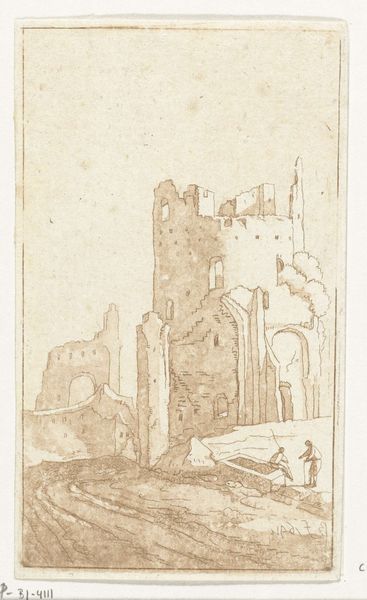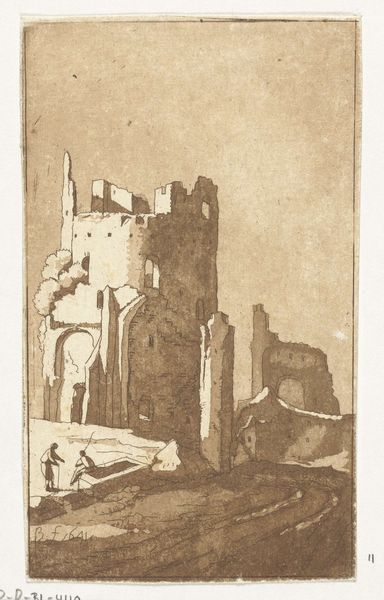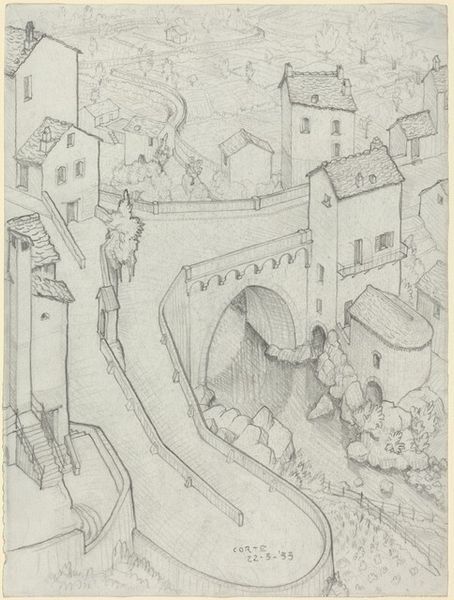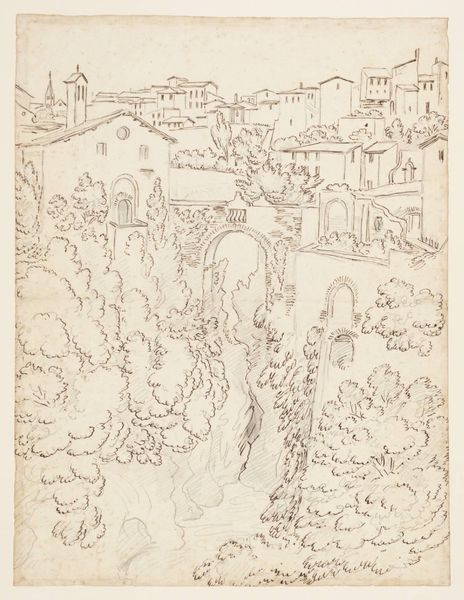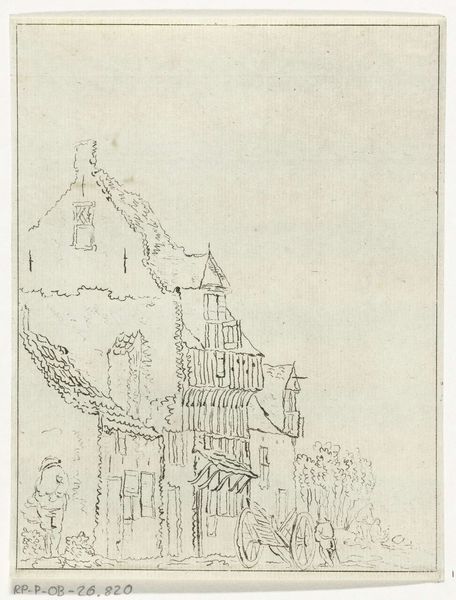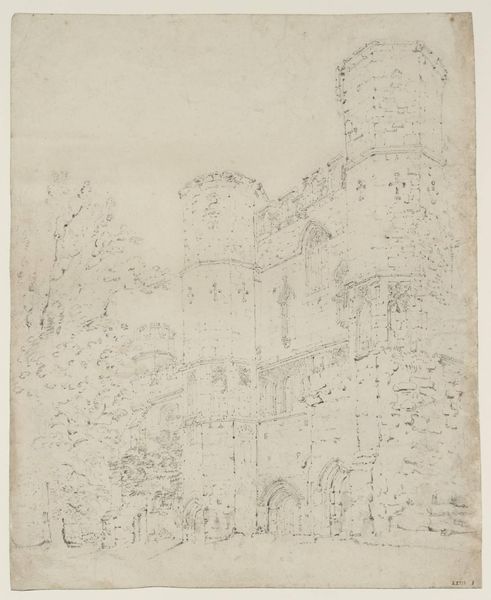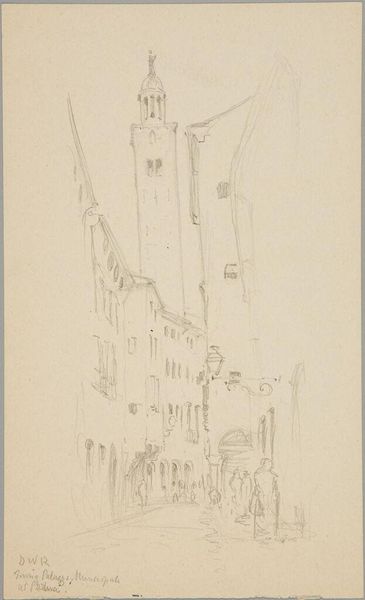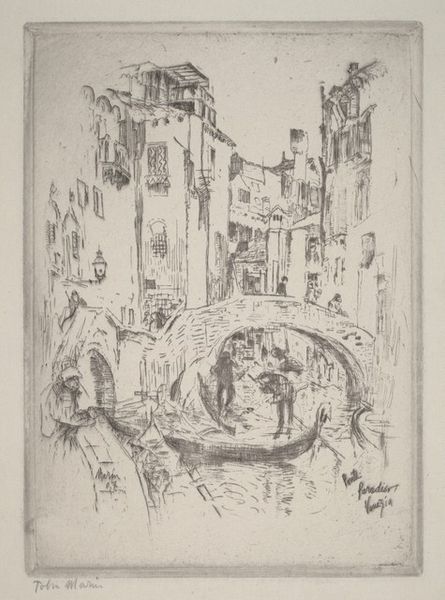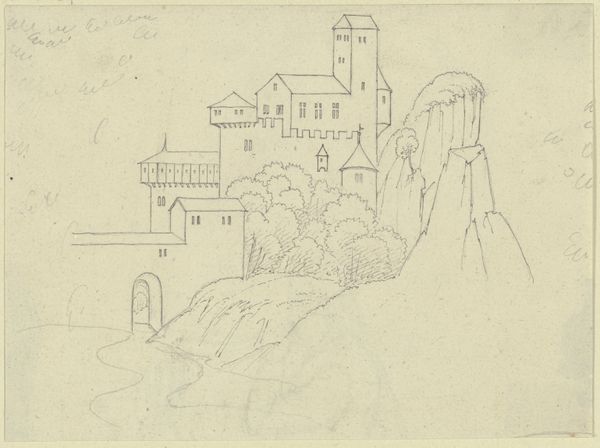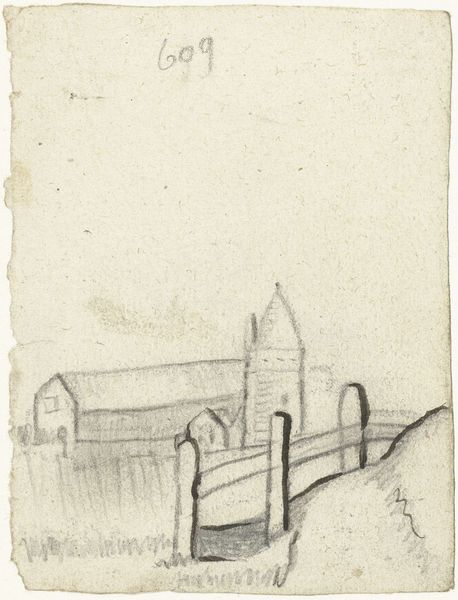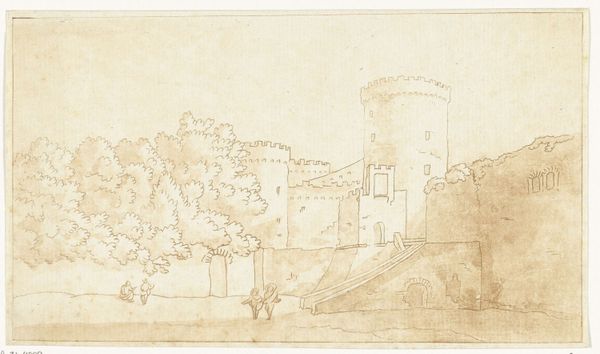
drawing, paper, ink
#
drawing
#
landscape
#
figuration
#
paper
#
form
#
ink
#
romanticism
#
line
#
cityscape
#
history-painting
#
academic-art
Dimensions: height 120 mm, width 72 mm
Copyright: Rijks Museum: Open Domain
Editor: Here we have Anthonie van den Bos's drawing "Ruïne", made between 1778 and 1838 using ink on paper. The ruins really evoke a sense of melancholy. How might the socio-political context have shaped the artist's portrayal of this ruined cityscape? Curator: The Romantic era, in which van den Bos worked, was deeply concerned with the passage of time and the fragility of human achievement. Ruins, as a visual motif, became incredibly popular as symbols of both past glory and present decay. They invited contemplation on the rise and fall of civilizations. Think about how the etching's creation also coincides with periods of significant upheaval - the Enlightenment's challenge to traditional structures, for instance. Do you think the artist is just documenting a ruin, or is something else going on? Editor: Perhaps there's a statement being made about the impermanence of power and the inevitable decline of institutions. Is it just about history? Curator: Exactly! The very act of depicting the ruins transforms it into a political commentary. Remember, art doesn’t exist in a vacuum; museums and galleries have their own biases about history, so even its display impacts perception. And by choosing to depict this subject with ink, what commentary does it present? Editor: That's true; ink allows for detailed line work that emphasizes the architectural detail, perhaps to document. It suggests a careful approach to this historical document, rather than a painting. Curator: Yes! This medium reinforces the artwork as historical observation with cultural context. It's been very insightful discussing how social perspectives might be relevant in understanding art. Editor: Indeed. Viewing it from a socio-political viewpoint gives much depth, considering the period's upheavals, making this piece a really loaded statement about history.
Comments
No comments
Be the first to comment and join the conversation on the ultimate creative platform.
